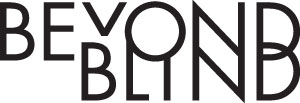Skip to: Tactile Exploration | Inquiry-based Learning | Discussion and Lecture
Tactile Exploration:
Build an Eyeball Science Project: Challenge your students to build an actual, physical model of the eye with common household materials.
Please Touch the Artwork: Engage your whole class in the creation of an art exhibit that is intended to be touched or experienced non-visually. This can include highly tactile sculptures; paintings that incorporate Braille and/or puffy-paint; audio experiences using headphones; smell boxes; and even ‘surprise’ boxes containing ambiguous tactile objects inside which must be touched in order to be ‘seen’. If you want to go ‘all out,’ this exhibit should be portable, and culminate in the exhibition of the students’ work at a local service organization for the blind.
Inquiry-based Learning
Kinds of Blind Research Project: Students can go deeper into learning about one visual disability of their choosing, visiting the library in order to research and write a paper about the condition. This research project can be conducted in a jigsaw format, which involves two stages: the research stage, during which groups of students collaborate on identifying resources and topics to include in a presentation to their fellow students; and a sharing stage, in which individual representatives from each research group recombine in small groups to share their findings with each other.
Personal Interview Project: Students can independently interview a person in their community who has a visual disability. They can write a profile of that person and post to a classroom blog; edit a video about that person in the style of Beyond Blind and post to Vimeo; or create a radio interview with that person and post to SoundCloud. If they know the person well, they can even record and submit their story using the StoryCorps mobile app.
Blind Hollywood: Ask students to choose one or more of the films below, and critique how well or poorly that film portrays blindness – as well as how it portrays its blind characters. Considerable preparation should be done with students in advance of this assignment, to discuss common stereotypes, biases, and misconceptions in the media about disability in general, and blindness in particular. Following this discussion, students can collaboratively generate a checklist with ideal criteria for positive, empowered portrayals of blind people. After watching their film at home (checklist in-hand), students will rate the film and then report their findings to the class.
|
|
|
Discussion and Lecture
Legal Blindness: Explore with students what the term ‘legally blind’ means, and discuss important disability benefits to which someone with this classification is entitled. Consider what legal blindness means in the wider disability rights movement, and introduces the concept of accessibility. Have your students work in groups to measure their own visual acuity — 20/40, 20/20, 20/15, 20/200 (legal blindness), etc.
Problematizing Simulation: Can someone who is sighted can really come to an accurate understanding of how a blind person experiences the world? Discuss whether ‘simulations’ such as wearing a blindfold for a day are beneficial (giving the sighted participant an experience that leads to a greater appreciation and understanding of blindness) or whether they are misleading and even harmful (leading sighted participants to conclude, for instance, that being blind is a terrifying, disempowering experience that brings up feelings of pity towards the blind, and increased fear of becoming blind themselves). For advanced-level students, assign the recent scientific article entitled “The Perils of Playing Blind.”
 Previous: Community Connections Previous: Community Connections |
Next: Reading, Watching, and Listening  |
